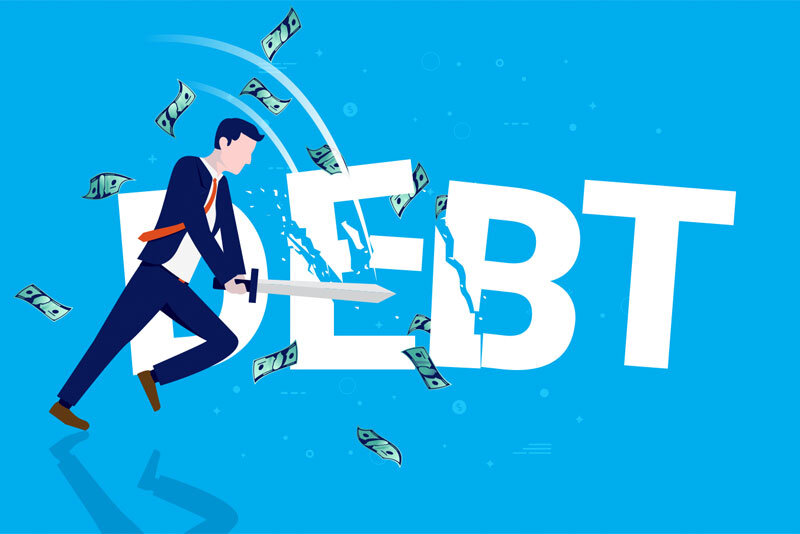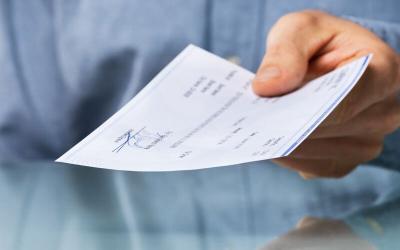Now that we are in full swing of the coronavirus pandemic, small businesses across the country are trying to make sense of the CARES Act and how the relief funding can help keep their businesses afloat. One area of confusion seems to be how a business receiving funds from the Paycheck Protection Program (PPP) and/or the Economic Injury Disaster Program Loan (EIDL) will have their loans forgiven. To date, details and information appear to change daily.
According to the Small Business Administration (SBA), there will be additional guidance on loan forgiveness within 30 days of March 27, 2020—the date the CARES Act was enacted. Here’s what we know now.
Paycheck Protection Program (PPP) Loan Forgiveness
Per the SBA.gov website on April 16, 2020, the SBA is currently unable to accept new applications for the Paycheck Protection Program based on available appropriations funding. The United States government is in discussions about providing further funding for this program. As with the PPP loan, the United States government is in discussions about providing further funding for this program.
The PPP provides small businesses with the funds to pay up to eight weeks of payroll costs including benefits. Borrowers can apply for two months of average monthly payroll costs from the previous year plus an additional 25% of that amount. The loan amount is capped at $10 million.
PPP loans are 100% forgivable as long as the business meets the following requirements:
- From the date “when the first disbursement occurs,” the funds are used to cover 8 weeks of payroll costs including salary, wages, commissions, tips, employee benefits (health care, retirement, vacation pay, family leave (capped at $100K per employee)
- Employee headcounts and salaries are retained. Independent contractors (ICs) do not count as employees for purposes of PPP loan forgiveness. Independent contractors have the ability to apply for a PPP loan on their own, so they do not count for purposes of a borrower’s PPP loan forgiveness.
- No more than 25% of the loan is used for non-payroll costs including rent, mortgage interest, and business utilities. Any utilities, rent, and mortgage must have originated or been in service before February 15, 2020.
The forgiven portion of the PPP loan is not taxable income.
The qualifying expenses for business entities formed to buy property or properties are still unclear.
Scenarios where the business is not qualified to have 100% of the PPP loan forgiven include:
- If the employee headcount is reduced during the 8-week benefit period. The SBA will compare the average headcount during the benefit period to the average headcount during the months you averaged payroll (e.g. 2019 or the first 2 months of 2020). As long as you restore the average headcount by the end of the 8-week period, the loan can still be forgiven.
- If salaries are reduced by more than 25% (based on every employee). The SBA will look at each employee’s salary reduction and reduce the amount of loan forgiveness based on the percentage of reduction. If the borrower restores salaries by the end of the 8-week benefit period, the reduction will be forgiven.
- At least 75% of the PPP disbursement must be used for payroll costs, with the remaining 25% used for qualifying expenses as state above. If any portion does not fall within these guidelines, that portion is not forgivable. You must use all the disbursements within the 8-week benefit period.
Your lender will base the numbers on what you submitted as payroll costs whether your business is a corporation, LLC, sole proprietor or independent contractor. Nonpayroll expenses eligible are also the same for all entities. Workers’ Compensation costs are not considered eligible as payroll or nonpayroll expenses.
Based on the CARES Act guidelines, any portion of the loan not in compliance with the above is considered not forgiven. The difference must be paid in full within two years at the interest rate of 1%. The loan is eligible for a 6-month deferment, however, it will still accrue interest.
To receive loan forgiveness, borrowers will need to provide proof to their lenders the funds were used appropriately. The details have yet to be released but borrowers will likely have to provide documentation showing payroll rates, additional payroll costs, any unemployment insurance filings, payment receipts for rent, mortgage and utilities and possibly more.
Economic Injury Disaster Program (EIDL) Loan Forgiveness
Small businesses may also apply for an EIDL loan of up to $2 million from the federal government through December 31, 2020. Applicants can also apply for up a $10,000 Economic Injury Disaster Loan Emergency Advance. The amount of the Advance is determined by the number of employees you had before the onset of the coronavirus (i.e., as of January 31, 2020). The advance will provide $1,000 per employee up to a maximum of $10,000. Only the EIDL advance monies are eligible for forgiveness. The actual EIDL loan is a 30-year term loan at 3.75% (nonprofits 2.75%).
Per the SBA.gov website on April 16, 2020, the SBA is unable to accept new applications at this time for the Economic Injury Disaster Loan (EIDL)-COVID-19 related assistance program (including EIDL Advances) based on available appropriations funding.
Applicants who have already submitted their applications will continue to be processed on a first-come, first-served basis.
If you have already applied for and/or received the EIDL advance, EIDL advances are 100% forgivable. Here are the terms for forgiveness.
Grant must only be used for the following expenses:
- Providing paid sick leave to employees unable to work due to the direct effect of the coronavirus
- Maintaining payroll to retain employees during business disruptions or substantial slowdowns
- Payments on mortgage interest, rent, utilities
- Increased costs to obtain materials unavailable from the applicant’s original source due to interrupted supply chains.
- Repaying obligations that cannot be met due to revenue losses.
Similar to the PPP, loan forgiveness will be reduced if salaries and wages are reduced by more than 25% or if used for noneligible expenses.
Noneligible expenses include:
- Dividends and bonuses
- Disbursements to owners
- Repayment of stockholder/ principal loans
- Expansion of facilities or acquisition of fixed assets
- Repair or replacement of physical damages
- Refinancing long term debt
- Relocation
Applying for both the PPP and the EIDL
According to the SBA, the EIDL emergency grant was enacted to get “money into your hands as soon as possible.” Because the grant is based on how many employees you have, you should use the Advance for payroll. You can be granted both the PPP and the EIDL Advance, however, the proceeds from any Advance up to $10,000 on the EIDL loan will be deducted from the loan forgiveness amount on the PPP loan.
As an example, let’s say you receive an EIDL emergency grant for $3,000. Subsequently, you receive the PPP loan for $25,000. As long as you use all of the PPP within the 8-week benefit period, $22,000 of the PPP will be forgiven and the $3,000 EIDL emergency grant will need to be paid back within two years at 1% interest rate.
Loan Forgiveness for Self-Employed Individuals and Independent Contractors
You are eligible to apply for the PPP and EIDL loans as a self-employed person and/or an independent contractor. Here are the details for each.
You are eligible to apply for the PPP, if you meet all these conditions:
- You were in operation on February 15, 2020
- Your primary place of residence is the United States
- You filed or will file a Form 1040 Schedule C for 2019 showing self-employment income.
The SBA will issue additional guidance for those individuals with self-employment income who were not in business in 2019 but were in operation on February 15, 2020.
You need to supply all of the following:
- Your 2019 1040 Schedule C (even if you haven’t filed it with the IRS yet)
- A 2019 1099-MISC, invoice, bank statement, or book of record that shows you were self-employed in 2019
- A 2020 invoice, bank statement, or book of record establishing that you were in operation on or around February 15, 2020.
Below are examples on how to calculate how much you can borrow.
For most independent contractors, calculating your PPP borrowing limit is a 3-step process:
- Step 1: Find line 31 on your 2019 IRS Form 1040 Schedule C. (If you haven’t filed yet for 2019, go ahead and fill it out). If the amount on Line 31 is over $100,000, write $100,000.
- Step 2: Divide the amount from Step 1 by 12.
- Step 3: Multiply the amount from Step 2 by 2.5. For most borrowers, this will be your maximum PPP loan amount
To have your PPP loan forgiven, you must use the funds to:
- Replace your compensation (based on your 2019 income) but cannot exceed eight weeks of your 2019 compensation up to $100,000- 75% of the loan must go towards this
- Pay interest payments on a mortgage or loan (such as an auto loan) you use to perform your business*
- Make business rent payments*
- Make business utility payments*
- Make interest payments on any other debt incurred before February 15, 2020 (but such amounts are not eligible for loan forgiveness)
* You must have claimed a deduction on your 2019 taxes for expenses described in 2, 3, and 4 above
You are eligible to apply for the EIDL Grant Advance when you apply for the EIDL loan. Applicants who are denied the EIDL loan, are still eligible to keep the grant. There is no obligation to repay the grant, however, if you secure a PPP loan the amount of the grant you receive will be subtracted from the PPP forgiveness amount.
When (if) the EIDL becomes available again, the preliminary application process takes only a few minutes. On the initial EIDL application you can check a box asking to be considered for the grant. If the lender deems you are eligible to continue applying for EIDL, you will be contacted by the lender and guided through the process by a loan officer.
Pandemic Unemployment Assistance (PUA)
Although self-employed persons and independent contractors are normally not eligible to receive unemployment insurance, under the CARES Act, such individuals can receive benefits under a special Pandemic Unemployment Assistance (PUA) program if they qualify.
According to the Department of Labor, “An individual who works as an independent contractor with reportable income also may qualify for PUA benefits if he or she is unemployed, partially employed, or unable or unavailable to work because the COVID-19 public health emergency has severely limited his or her ability to continue performing his or her customary work activities, and has thereby forced the individual to suspend such activities” is eligible.
Unemployment insurance is regulated by the state you live in and PUA pays the same weekly benefits, but the benefits are 100% federally funded. PUA benefits are available for 39 weeks. The PUA program also awards an extra $600 per week on top of the state-calculated benefit through July 31, 2020. The PUA programs will end December 31, 2020. If you receive a PPP loan, you cannot collect unemployment insurance.
CorpNet Is Here to Help
CorpNet remains open and in full operation Monday through Friday from 7 a.m. until 5:00 p.m. PST to help. Our team is safely self-distanced and set up to work remotely with all of the necessary tools and resources to serve you. Contact us today at 1-888-449-2638 to discuss how we can help you.





